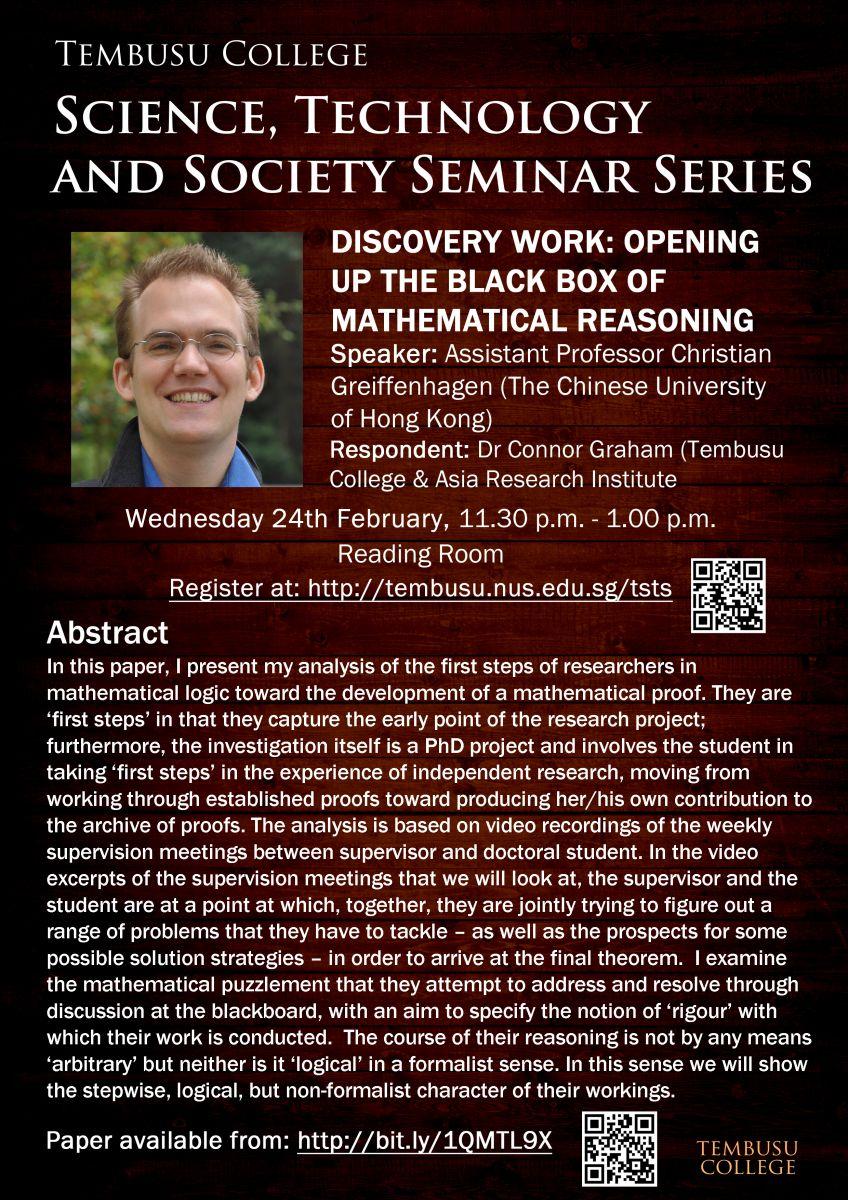
Tembusu College
Science, Technology and Society Seminar Series
Discovery Work: Opening Up the Black Box of Mathematical Reasoning
Speaker: Assistant Professor Christian Greiffenhagen (The Chinese University of Hong Kong)
Respondent: Dr Connor Graham (Tembusu College & Asia Research Institute)
Wednesday 24th February 11.30am-1pm
Register at: https://tembusu.nus.edu.sg/tsts
Abstract:
In this paper, I present my analysis of the first steps of researchers in mathematical logic toward the development of a mathematical proof. They are ‘first steps’ in that they capture the early point of the research project; furthermore, the investigation itself is a PhD project and involves the student in taking ‘first steps’ in the experience of independent research, moving from working through established proofs towards producing her/ his own contribution to the archive of proofs. The analysis is based on video recordings of the weekly supervision meetings between supervisor and doctoral student. In the video excerpts of the a point at which, together, they are jointly trying to figure out a range of problems that they have to tackle – as well as the prospects for some possible solution strategies – in order to arrive at the final theorem. I examine the mathematical puzzlement that they attempt to address and resolve through discussion at the blackboard, with an aim to specify the notion of ‘rigour’ with which their work is conducted. The course of their reasoning is not by any means ‘arbitrary’ but neither is it ‘logical’ in a formalist sense. In this sense we will show the stepwise, logical, but non-formalist character of their workings.
The paper being discussed is available from: http://bit.ly/1QMTL9X


